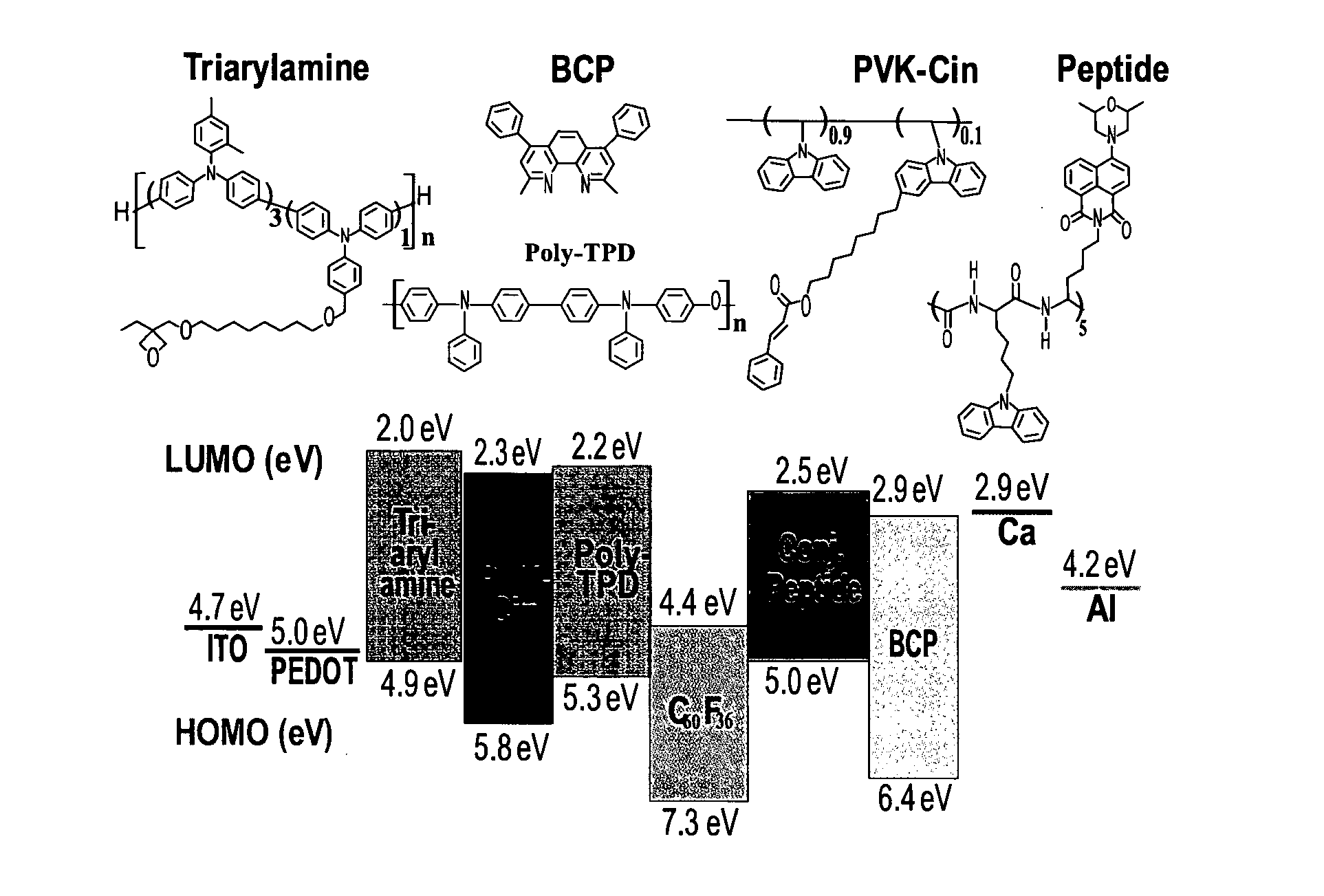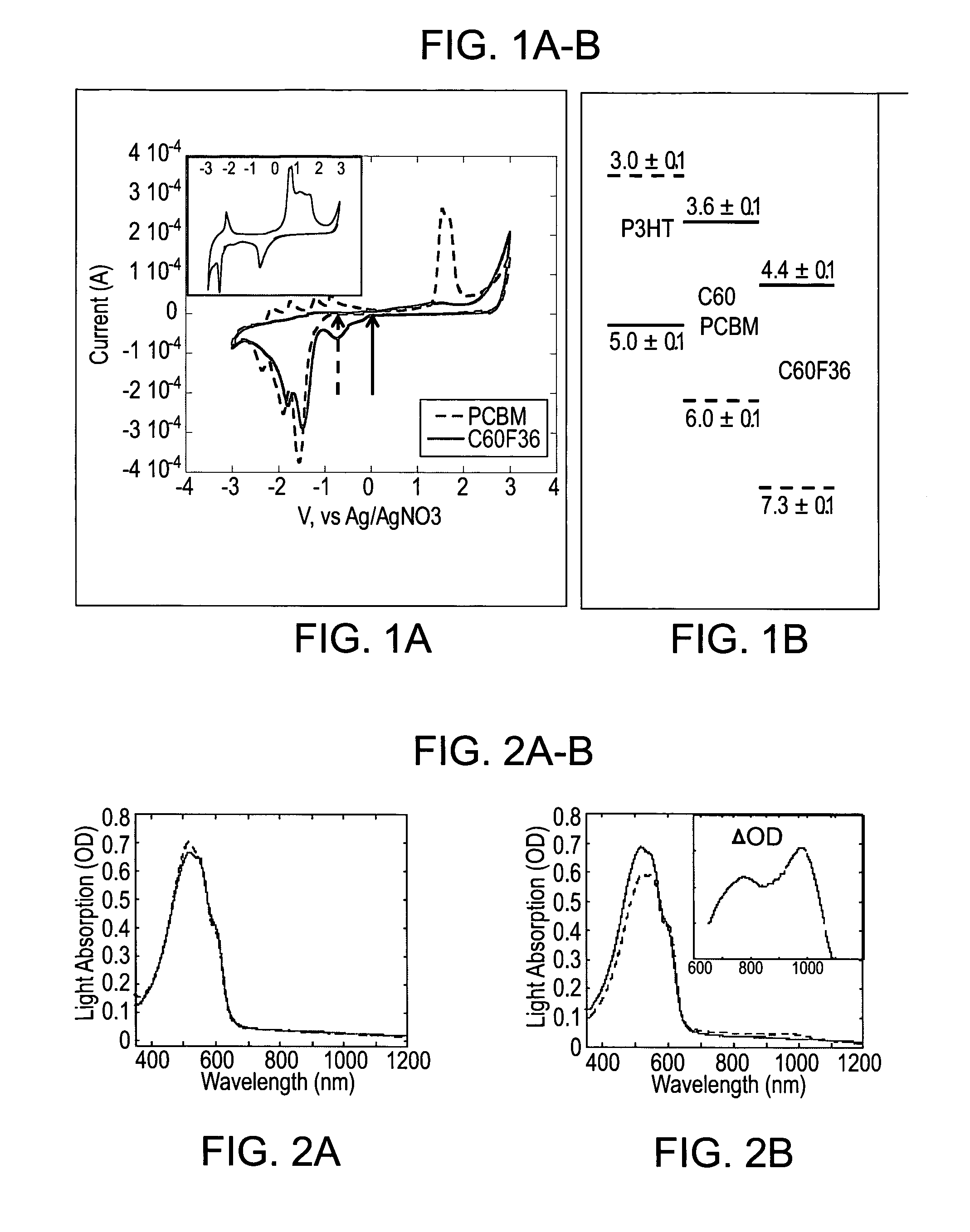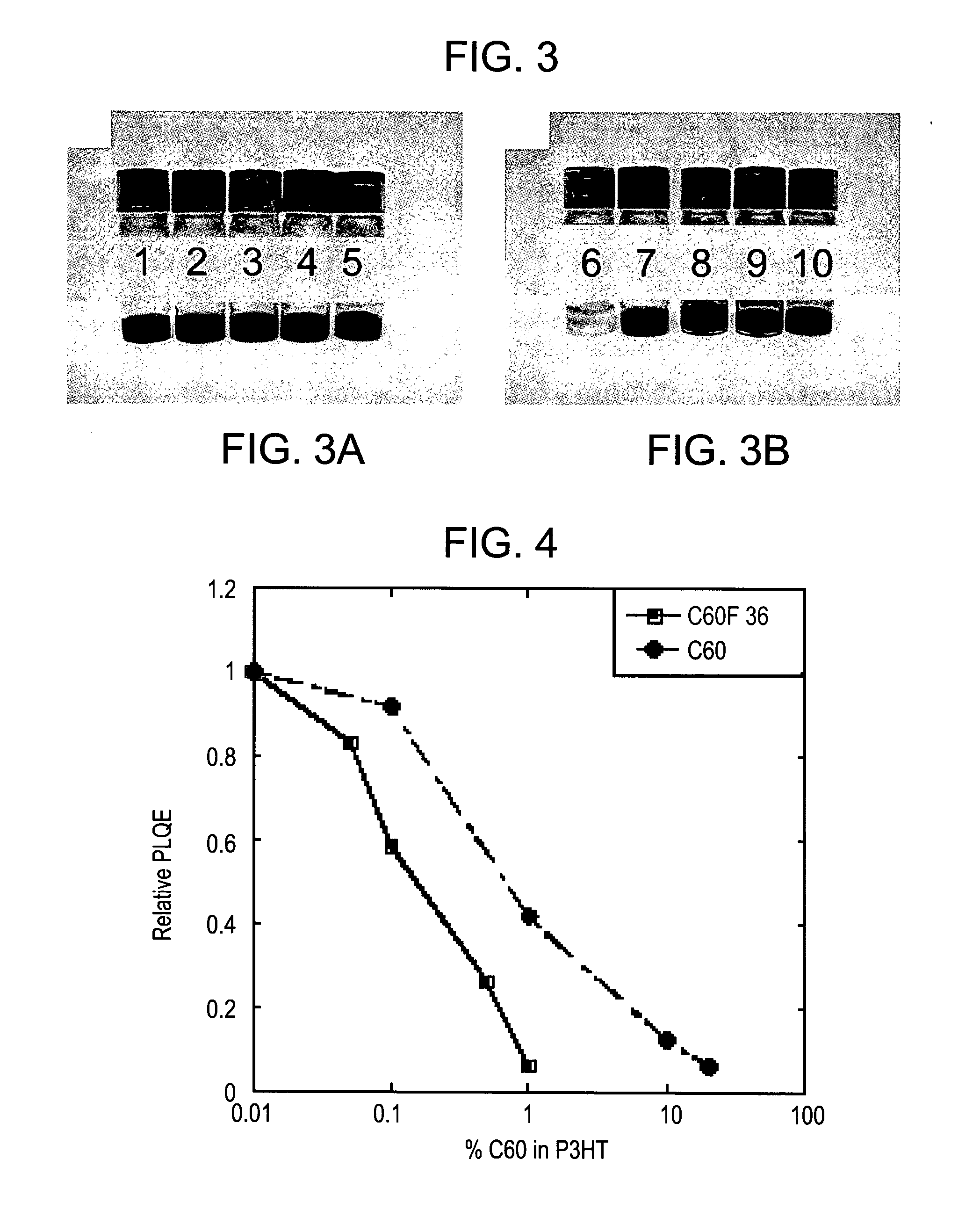Derivatized fullerene-based dopants for organic semiconductors
a technology of organic semiconductors and dopants, which is applied in the direction of sustainable manufacturing/processing, non-metal conductor manufacturing, and final product manufacturing, etc., can solve the problems of high process control and regulation costs, inability to always be sufficiently precise, and large manufacturing process in large technical production plants
- Summary
- Abstract
- Description
- Claims
- Application Information
AI Technical Summary
Benefits of technology
Problems solved by technology
Method used
Image
Examples
example 1
Potentiodynamic Electrochemical Measurements of Doped Systems
[0185]To characterize the ability and capacity for doping of C60F36, its HOMO-LUMO gap was measured and compared to other C60 derivatives.
[0186]The OSC polymer, poly(3-hexylthiophene-2,5-diyl) (P3HT, CAS N. 104934-50-1) was selected as an exemplary OSC polymer to show the doping effect of the C60 and an exemplary fullerene derivative [6,6]-phenyl-C61-butyric acid methyl ester (PCBM), which is commonly used in the art as an excited state acceptor.
[0187]Cyclic voltammetry (CV) was used for the potentiodynamic electrochemical measurements of the electrochemical properties of the analytes in the form of thin films.
[0188]Generally, the polymer films were fabricated by spin-coating a blend of P3HT / fullerene in 90 / 10, 99 / 1, 99.9 / 0.1, 99.99 / 0.01 and 100 / 0 weight percent ratios respectively. P3HT was first dissolved in 1,2-dichlorobenzene (DCB) to afford a 20 mg / ml solution, followed by blending with 20 mg / ml solution of C60F36 or ...
example 2
Charge-Polaron Induced Absorption in Doped Systems
[0194]A known signature of charge transfer in OSC conjugated polymers is the appearance of a new absorption band associated with charge-polaron induced absorption. Polarons are quasiparticles composed of an electron and a polarization field associated therewith. Polarons are formed when a charge within a molecular chain influences the local nuclear geometry, causing an attenuation or even reversal of nearby bond alternation amplitudes, constituting an excited state which possesses an energy level between the lower and upper energy level bands.
[0195]In order to measure the effect of doping of an OSC polymer with a fluorinated fullerene derivative according to embodiments of the present invention, the absorption spectrum of various systems was recorded and compared as follows.
[0196]Polymer films (and blends of OSC and fullerenes) were prepared as described in Example 1 hereinabove. Absorption spectra were measured using UV-Vis-IR spect...
example 3
Visual Effects in Doped Systems
[0200]In order to demonstrate the visual effect of p-doping by fluorinated fullerene derivatives according to embodiments of the present invention, two sets of solutions containing an OSC polymer (P3HT) mixed with a non-fluorinated fullerene (C60) and a fluorinated fullerene (C60F36) in dichlorobenzene (DCB) were compared by visual inspection, and the results are presented in FIGS. 3A-B.
[0201]FIGS. 3A-B are color photographs of two sets of vials, wherein vial No. 1 contains C60 (20 mg in 1 ml of DCB); vial No. 2 contains P3HT (20 mg in 1 ml of DCB); vial No. 3 contains P3HT (20 mg in 1 ml of DCB) mixed with C60 (2 mg or 10% by weight); vial No. 4 contains P3HT (20 mg in 1 ml of DCB) mixed with C60 (0.2 mg or 1% by weight); vial No. 5 contains P3HT (20 mg in 1 ml of DCB) mixed with C60 (0.002 mg or 0.01% by weight); vial No. 6 contains C60F36 (20 mg in 1 ml of DCB); vial No. 7 contains P3HT (20 mg in 1 ml of DCB); vial No. 8 contains P3HT (20 mg in 1 ml...
PUM
| Property | Measurement | Unit |
|---|---|---|
| energy level | aaaaa | aaaaa |
| energy level | aaaaa | aaaaa |
| energy level | aaaaa | aaaaa |
Abstract
Description
Claims
Application Information
 Login to View More
Login to View More - R&D
- Intellectual Property
- Life Sciences
- Materials
- Tech Scout
- Unparalleled Data Quality
- Higher Quality Content
- 60% Fewer Hallucinations
Browse by: Latest US Patents, China's latest patents, Technical Efficacy Thesaurus, Application Domain, Technology Topic, Popular Technical Reports.
© 2025 PatSnap. All rights reserved.Legal|Privacy policy|Modern Slavery Act Transparency Statement|Sitemap|About US| Contact US: help@patsnap.com



